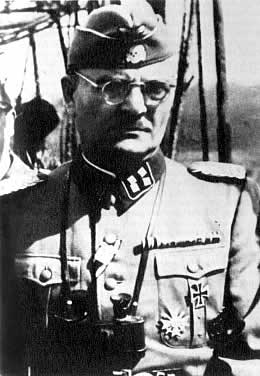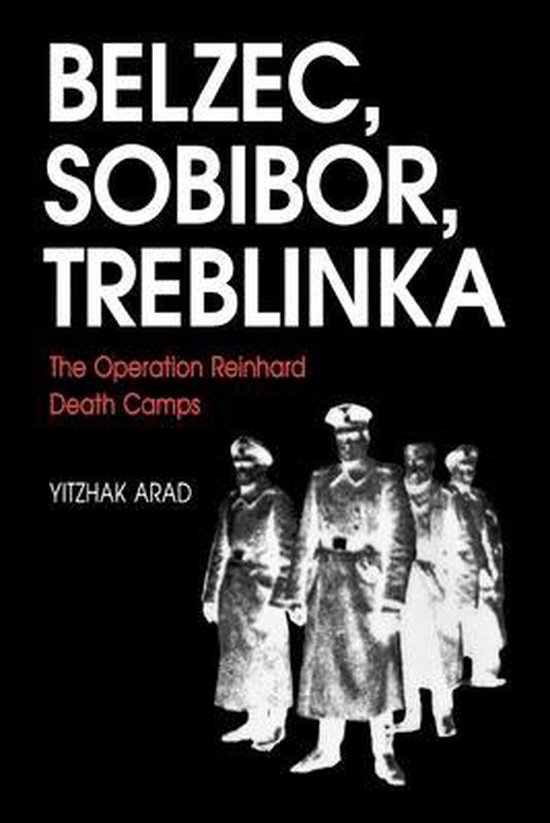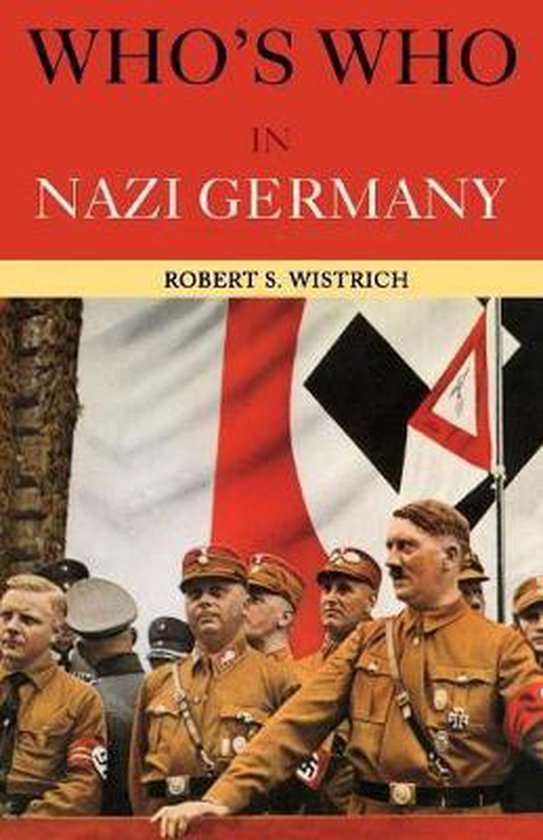Christian Wirth
Christian Wirth was one of the most important executors of the Nazi euthanasia program and Aktion Reinhard, the extermination of the Jews in the General Government in Poland. He became notorious for his enormous sadism and was known by his nickname Christian der Grausame or Christian the Cruel One. He was born November 24, 1885 in Oberbalzheim in the former state of Württemberg. Prior to the outbreak of World War One, Wirth initially worked as a carpenter but in 1910 he became a police officer. During World War one he served on the Western Front and was awarded the Eisernes Kreuz 1 or Iron Cross first class.
During the 30s, Wirth was employed as police officer in the department of homicide of the police in Stuttgart.
- "He investigated crimes, punishable by death, mainly assassinations, SS-judge Konrad Morgen (Bio Morgen) reports when he investigated Wirth’s possible involvement concerning corruption during the execution of Aktion Reinhard. "He had a good reputation of checking leads. Before the seizure of power by the Nazis, he was known by the general public for his heartless interrogation techniques that even led to a discussion in the Landestag (local government) of Württemberg).
Along with a number of other police officers, Wirth was transferred to the psychiatric hospital Grafeneck in October 1939 in order to participate in the euthanasia program, carried out and supervised by the Kanzlei des Führers (Hitler’s chancellery). This program was known as Aktion T-4 and was intended to exterminate mental patients and disabled – also designated useless eaters - in order to "secure the purity of the Arian race." Initially, the victims were killed by lethal injections but later on mainly gas vans and gas chambers were used.
Meanwhile, Wirth had been promoted to Kriminaloberkommissar and held the rank of SS-Obersturmführer. Towards the end of 1939 he was named director of administration in the euthanasia center in Brandenburg on the Havel. Dr. Irmfried Eberl, the first commander of extermination camp Treblinka was employed here as director of medicine. In December 1939 or January 1940 the first gassing experiment – as far as known - in a static gas chamber was conducted here, directed by Wirth. A small group of mental patients was gassed with carbon monoxide in a confined space. The experiment was attended by Phillip Bouhler and Viktor Brack of the Kanzlei des Führers. Bouhler came up with the idea to make the gas chamber look like a shower room in the future, so victims would not become suspicious before the gassing started. Eventually, all gas chambers in the extermination camps would be camouflaged in this way.
Early 1940, Wirth returned to Grafeneck. Subsequently he found employment for a short while in the euthanasia facilities in Hadamar, Germany and Hartheim Castle in Austria. Mid-1940, Wirth was appointed inspector of all euthanasia centers in the Third Reich. Franz Stangl (Bio Stangl) who was named commander of Camp Sobibor in April 1942 and who was transferred in August 1942 to take charge in Treblinka, met With for the first time in Hartheim:
- "Wirth was an uncouth and self centered man," so he tells. "My heart sank when I met him. He was staying in Hartheim for a few days and he often came back. Whenever he was here, he addressed us daily at lunch. And there again was that horrible verbal cruelty: when he spoke about the importance of this euthanasia operation he did not speak in human or scientific terms [..} he laughed. He spoke of disposing of these useless eaters (nützlose Esser) and that this sentimental chattering about such people made him throw up."
On August 24, 1941, the euthanasia program was officially discontinued as it gradually met with more and more opposition from the Church and relatives of the victims. The executors of the program were anything but rendered unemployed. Many of them, including Wirth were transferred to the Lublin district in the General Government in Poland to participate in Aktion Reinhard. The experience they had gained with the gassings in the euthanasia facilities could be put to perfect use in this operation, aimed at gassing all Jews from the General Government in extermination camps.
The first extermination camp was located in Belzec. Wirth was its first commander, arriving in December 1941. What he has done in the period between August and December is not known exactly but he was probably involved in a euthanasia program targeted on Polish physically and mentally disabled patients. Other sources claim he was employed in Chelmno for a while, the first location where Jews were gassed systematically in gas vans from December 1941 onwards.
Belzec was the first extermination camp where static gas chambers were put to use. It was decided to use carbon monoxide here as well to kill the victims, just like during Aktion T-4. The way Wirth "sculpted" the extermination process in Belzec served as a model for the extermination camps Sobibor and Treblinka. August 1, 1942 saw Wirth appointed to "Inspekteur der SS-Sonderkommandos Aktion Reinhard" or inspector of all three camps of Aktion Reinhard. In this position he was in charge of all three commanders and directly subordinate to Odilo Globocnik (Bio Globocnik), chief of Aktion Reinhard.
Not only his experience but above all his enormous cruelty made Wirth a suitable executor of Aktion Reinhard.
- "Of my activities in Treblinka and Sobibor, I remember Wirth could not be surpassed in cruelty, meanness and ruthlessness," SS-Scharführer Franz Suchomel recalls. "That is why we named him Christian der Grausame (the terrible) or Christian der Wilde (the wild). The Ukrainian guards called him the STUKA after the dive-bomber. Wirth’s cruelty was so immense that I personally considered it perversity. I remember in particular Wirth lashing the Ukrainian guards on any occasion with the whip he was always carrying.""
A survivor of Belzec remembers Wirth as: "a tall, broad shouldered men in his mid forties with a cruel face, he was a born criminal. A real beast. Although he rarely showed up, even the SS men were afraid of him." That even SS men were afraid of him is not strange if we have to believe this statement by Franz Stangl:
- "Wirth was standing in front of the building – the gas chamber in Sobibor – wiping the sweat off his cap and boiling with rage. Hermann Michel, one of the N.C.O.’s in the camp told me later that Wirth had suddenly appeared, looked around in the gas chambers where work was still under way and said: ‘OK, we’ll try it right away with these 25 Arbeitsjuden. Bring them in’. They had 25 Jews appear, pushed them inside and gassed them. Michel told me Wirth was behaving like an idiot, he lashed his workers with his whip to spur them on."
- Regarding the Arbeitsjuden, Wirth emphasized time and again that those who did not work should be taken away", Stangl states. "Every leader of an Arbeitskommando and every camp commander had the authority to send any prisoner to the Lazarett who did not work or conducted himself in an unsatisfactory way."
After Aktion Reinhard was discontinued in the fall of 1943, Wirth and other officers and men of the operation were transferred to the region around Trieste in northern Italy. Odilo Globocnik was appointed local Höhere SS- und Polizeiführer. Globocnik, Wirth and their colleagues were responsible for hunting down and arresting partisans and Jews. Meanwhile, Wirth had been promoted to SS-Sturmbannführer and in November 1943 he temporarily returned to the Lublin district to take charge of Aktion Erntefest (harvest fesival), the code name for the extermination of the last remaining Jews in the General Government who had been imprisoned in the labor camps in the Lublin district. Subsequently, Wirth returned to northern Italy where he was killed during a street fight against partisans on May 26, 1944.
Definitielijst
- Aktion Erntefest
- “Operation Harvest Festival”. Code name for the German operation in the autumn of 1943 to exterminate all remaining Jews in the district of Lublin. It was a reaction to Jewish acts of resistance in the Generalgouvernement such as the uprisings in Sobibor and Treblinka. The operation started on 3 November 1943. Within a few days approximately 42,000 Jews were murdered.
- Eisernes Kreuz
- Iron Cross. German military decoration.
- Iron Cross
- English translation of the German decoration Eisernes Kreuz.
- Jews
- Middle Eastern people with own religion that lived in Palestine. They distinguished themselves by their strong monotheism and the strict observance of the Law and tradition. During World War 2 the Jewish people were ruthlessly persecuted and annihilated by the German Nazis. . An estimated 6,000,000 Jews were exterminated.
- Kripo
- Kriminalpolizei. Criminal investigation agency. Ordinary civilian police of Nazi Germany.
- Mid
- Military intelligence service.
- Nazi
- Abbreviation of a national socialist.
Images
 Christian Wirth, inspector of the extermination camps Belzec, Sobibor and Treblinka. Source: http://www.olokaustos.org.
Christian Wirth, inspector of the extermination camps Belzec, Sobibor and Treblinka. Source: http://www.olokaustos.org.Information
- Article by:
- Kevin Prenger
- Translated by:
- Arnold Palthe
- Published on:
- 19-01-2025
- Feedback?
- Send it!
Related sights
Related books
Sources
- ARAD, Y., Belzec, Sobibor, Treblinka, Indiana University Press, Bloomington (USA), 1999.
- BREITMAN, R., Heinrich Himmler, Verbum, Laren, 2005.
- KNOPP, G., Hitlers Holocaust, Byblos, Amsterdam, 2001.
- REES, L., Auschwitz, Anthos, Amsterdam, 2005.
- SPECTOR, S. & ROZETT, R., Encyclopedie van de Holocaust, Kok, Kampen, 2004.
- WISTRICH, R.S., Who's who in Nazi Germany, Routledge, Londen, 2002.






